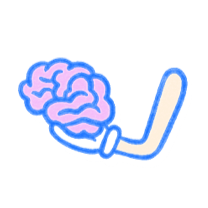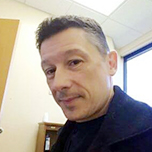My friend with Seasonal Affective Disorder
I have a friend who has a difficult time at the same time every year. Over time, she has learned exactly when her mood seems to shift away from her normally happy and productive self and has pinpointed it to a moment in the retail cycle. “As soon as the Hallowe’en decorations come down,” she tells me, “That’s when I know we’re getting into the bad season.”
The ‘bad season’ my friend talks about is something we call Seasonal Affective Disorder or SAD.
Social workers at all levels have a role in treating mental disorders, including SAD. Beginning at the Bachelor’s level and working up through Masters’ and Clinical credentials, social workers provide therapy, take part in treatment planning, and often run programs or organizations at an administrative level. Psychologists and substance abuse counselors often take the front-line role in helping people through the more difficult seasons in their lives.

Being someone who can help people with these problems can be highly rewarding. If you’re thinking of a career in mental health or considering a shift in your existing career, you probably know that credentials are key. Along with experience and education, credentials are the gateway to higher income, more responsibility, and enhanced control.
For some people, the most challenging part of credentialing is the anxiety of the credentialing test itself. This is understandable, as credentialing exams are highly structured, specially scheduled, and expensive. Your credentialing strategy must have a test preparation strategy that will allow you to walk into the test environment without having to worry about the content of your exam.
Who Can Treat Seasonal Affective Disorder?
First addressed scientifically in 1984, SAD is now a recognized specifier for depression found in the Diagnostic and Statistical Manual of Mental Disorders, 5th edition (DSM-5) as Major Depressive Disorder with Seasonal Pattern. The diagnostic criteria mirror those of Major Depressive Disorder in many ways; the sufferer has less energy, less libido, and experiences hopelessness and social withdrawal.
In the case of those with Seasonal Affective Disorder, these symptoms are almost exclusively experienced at a specific time of year; this time of year seems better defined by available sunlight rather than by a specific date but tends to be from the end of October/beginning of November to March/April.
What Causes Seasonal Affective Disorder?
As in almost all cases of depression, causation is a mosaic. One explanation is that the available light in the Northern Hemisphere, where most sufferers of Seasonal Affective Disorder are found, tends to decrease dramatically at this time.
The amount of sunlight one receives during the day has long been known as a contributor to mood, but in sufferers from SAD this seems to activate a seasonal pattern. Many sufferers describe something very close to a kind of walking hibernation. Not only is there more sleep, but there is also less energy and a greater desire for unhealthy eating.
The issue is complex. Though available sunlight can be identified as a contributor, there are many other factors to our seasonal moods that make it a much broader phenomenon. Social withdrawal can lead to fewer social contacts and unwanted isolation, making any mental health problem worse. Lack of restful sleep can compromise mood and energy.
Substance abuse problems can emerge or exacerbate as people attempt to comfort themselves or cope. Sedentary lifestyles threaten mood and physical health.
As if that weren’t enough, for many people the holidays are difficult on their own. High social expectations, increased stress, and reliving past holiday trauma can create an environment full of destabilizing anxiety and emotional dislocation. Any recent loss will be more keenly felt as some of the people we saw around the holiday table aren’t there this year. Throw in the pandemic of 2020, and there are a lot of emotionally tricky areas to navigate.
Even reading these words, it probably seems bleak! But the good news is that SAD, as well as other kinds of depression, is highly treatable with a wide array of possible approaches. As clinicians providing care in a difficult time, we can meaningfully help people who suffer from this disorder.
What Helps Patients with SAD
1. What can clinicians do?
Treatment for SAD may include an antidepressant, which is one of the front-line interventions for any kind of depression. The psychiatrist treating the disorder will probably also suggest some sort of intervention involving talk therapy. There are many different kinds of therapist and therapy available, but in many cases
Cognitive Behavioral Therapy (CBT) has been found very effective in combination with medical intervention. CBT challenges our assumptions and teaches better tools and strategies for addressing our negative thoughts.
Some clinicians recommend the use of a sunlamp to approximate sunlight, but this should be carried out under the guidance of a qualified behavioral professional.
Again, though the contribution of psychiatry is central in many cases, it can be argued that the main burden of the therapeutic work falls upon social workers and psychologists who are going to be intervening with the above modalities and many others that they are specially trained for. With their solid behavioral science credentials as a foundation, a world of specialization opens up for any clinician.
2. What can clients do?
Clients may find that doing some advance planning can help. Knowing that one is entering a difficult season and preparing for it can help one make it through. Alone or with a professional, it may help a client to commit to a personal, individualized plan that contains the following elements:
- What are the specific days and occasions you are dreading?
- Who are the people to avoid?
- Commit to regular connection with people who restore and heal you
- Take personal self-care steps. Learn to say ‘no’.
- Define the season for yourself, in your own terms, as something positive
- What’s your plan if things get bad? Who will you call?
- Find a ‘holiday partner’ who feels the same as you for mutual coping and support
All seasons pass, even the most difficult. It might be healthy to remember that each cold, gloomy, icy day is one less on the calendar until Spring. Examining, challenging, and treating this pattern could help change our clients’ most difficult season into an opportunity for growth and renewal.
What’s Next
If you’re currently in or looking to begin a career in behavioral health, getting certain certifications are an important step. Pocket Prep has you covered with study support through the convenience of a mobile app.
Our Behavioral Health Pocket Prep app features study prep for many useful behavioral health certifications including the ASWB Licensed Clinical Social Worker (LCSW) and the ASWB Master of Social Work (MSW). It’s free to download and all premium accounts feature a three-day free trial period. When you’re ready to study, we’re here to help.


